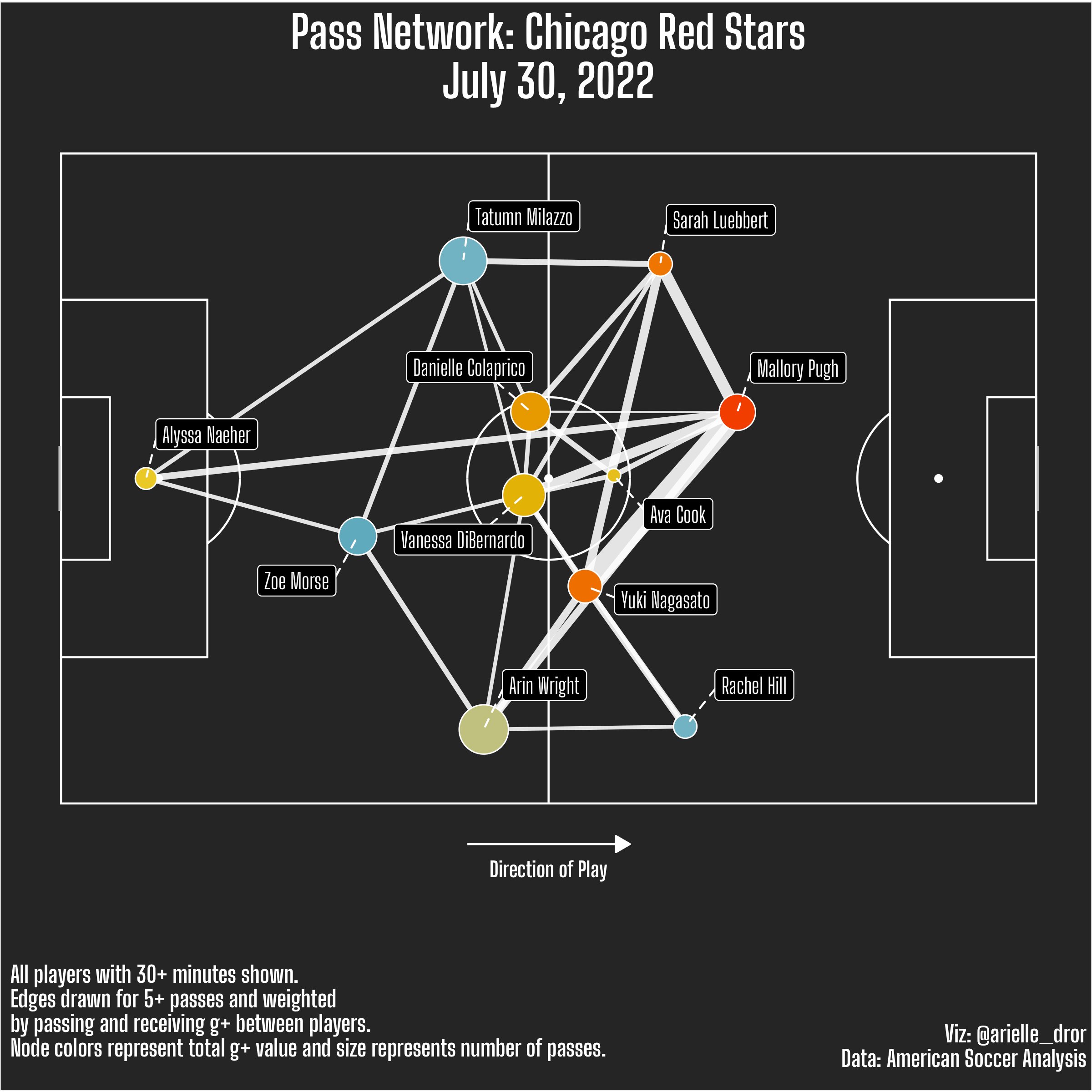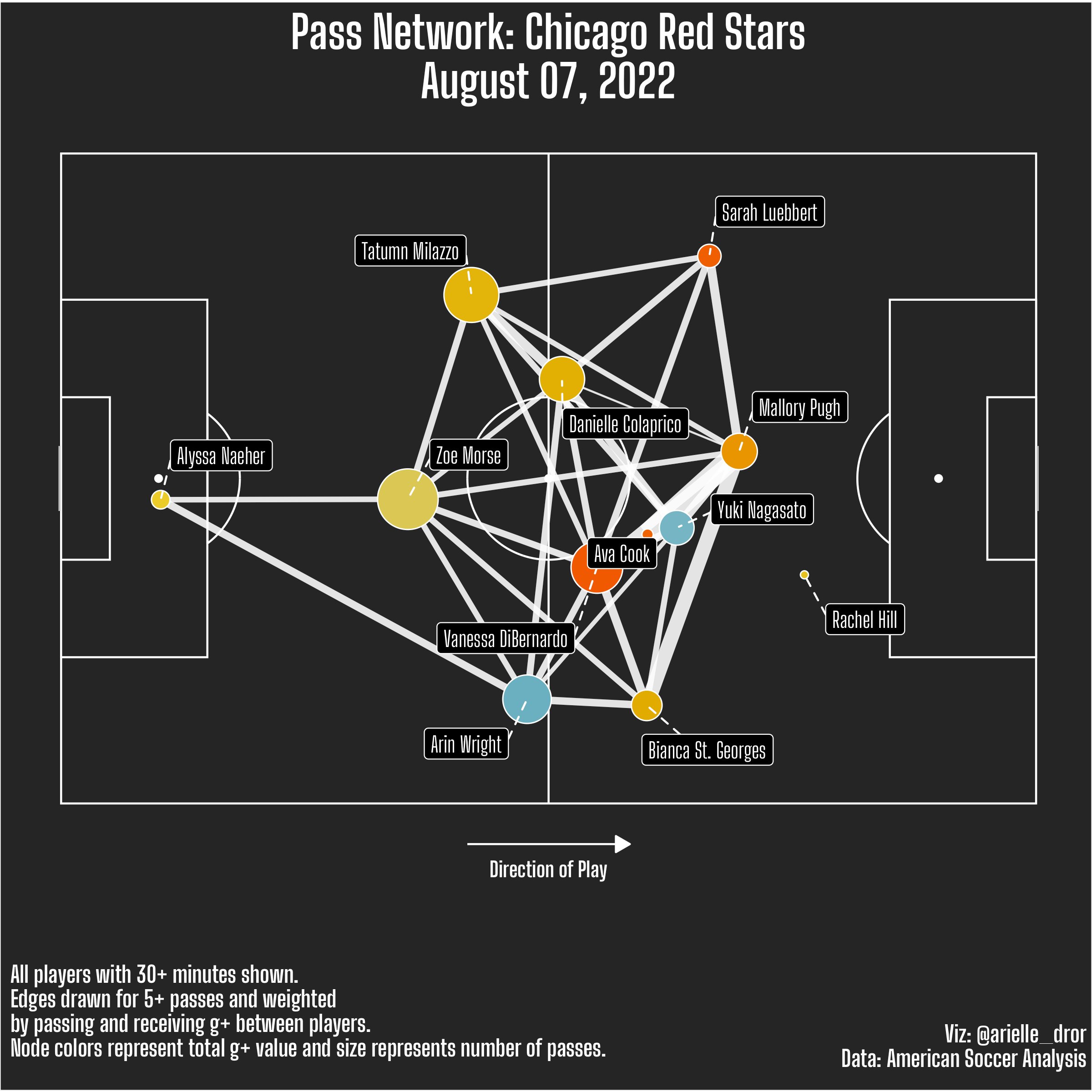© 2026 ALLCITY Network Inc.
All rights reserved.

The Red Stars got back in the win column last weekend, with an utterly dominant performance against a struggling Gotham FC side.
The Red Stars won every major stat in the 2-0 win, from passes attempted, passing accuracy, tackles, shots, and shots on goal (of which Gotham did not register even one.) Chicago still struggled to finish their chances created, with both of their goals punched in on set pieces, but the match reflected the kind of standard the Red Stars have held themselves to this year.
That concept of steady, plugged-in performances has become Chicago’s calling card, and it’s not shocking their discipline and calm showed through against a Gotham team adrift at sea. Arin Wright, who has slotted in well to the established Red Stars three-back in recent weeks, encapsulated the process well this week, saying “I feel like that’s kind of the motto of the team this year. Everyone’s just kind of taking things in stride, plugging and when they need to.”
The buy-in squad-wide has been notable, even as the team struggled through a brief two-game losing streak. Looking at the team’s passing maps in both of those losses, not a lot changed, nor did the shape look pulled out too significantly.

Against the Houston Dash, despite a rough 4-1 loss off an Ebony Salmon hat-trick, Chicago’s intention in their passing methods remained clear. The team passed heavily through defensive midfielder Danny Colaprico, with Yuki Nagasato sitting behind Vanessa DiBernardo. The team’s attack couldn’t connect as well as they usually do with Mallory Pugh on the field, but its possession numbers remained strong.
What the passing map here misses are the turnovers, punished by Salmon, that led to the lopsided scoreline, but the commitment to methodical build-up reflects confidence in the process. Ava Cook fell back into the midfield at times to receive the ball, with Sarah Luebbert averaging the most advanced position on the field for the Red Stars, which also reflects the efficiency issues the team has had in recent weeks.
Against San Diego, Chicago advanced the ball quicker, spending more time in their opponent’s half. The game state influenced this one heavily, with the Wave again pouncing on a mistake in the back to pull ahead, and then sitting with most of their players behind the ball after going down to ten on an Abby Dahlkemper red card.

Here, Pugh arrives back as the clear focal point, with the center-backs stretching to provide quick service. This time, Nagasato posted up in front of the established defensive midfield partnership of DiBernardo and Colaprico, with the shape in defensive transition looking remarkably similar as the week before. However, Cook again drops back behind Pugh to receive service, which has become a theme.
The nature of passing maps over 90 minutes means that some players are going to have averaged out positions that don’t always reflect exactly how they played the game. Pugh, for example, is frequently a data-breaker by way of drifting towards either flank, which gives her a more central average position on the field at the game’s end. However, the relationship of Pugh to Cook should give the team some pause as they try to get their goal-scoring boots back on in the run of play.
They’ll get more time to gel in the next few weeks, but Cook sometimes finds herself reacting to Pugh’s freedom and pace by filling in spaces behind her, when she would be better served as a forward passing outlet. Against Gotham, Luebbert filled that role on the flank from the wingback position, and Nagasato pushed about as far forward as she has been all season.
Chicago’s formation against NJNY shows just how far forward the Red Stars felt comfortable sitting, as Gotham sat in to try to stop the bleeding (and almost succeeded, with Chicago only getting a breakthrough courtesy of Tatumn Milazzo in first-half stoppage time.) It also shows some of the creative freedom being given to the group to try to foster higher efficiency shooting.

Nagasato finished the match in a more advanced position than Cook, which feels like solving one problem while creating another. Chicago’s 3-2-4-1 is meant to leave one central striker to facilitate and finish, and that feels like the greatest work in progress as the team goes through their final eight games of the season.
But if there’s a main takeaway from the last few weeks, it’s that Chicago’s system can withstand adversity, no matter what players are called upon to execute it. These principles have allowed the Red Stars to remain a stone’s throw away from the top of the table despite overwhelming absences.
The Red Stars haven’t been perfect, but they understand that their greatest strengths are keeping their heads, slowing things down, and not making mistakes. They’re about to go on a four-game road trip, and the system will be tested again. They appear ready for the challenge.
“We’re much better when the game has calmed down and, and we’re in our structure and possessing the ball and things like that,” head coach Chris Petrucelli said this week. “If it gets end to end, and crazy NWSL-style things are happening, that’s probably not the best game for us to play. So it really does come on us to settle the game.”
Comments
Share your thoughts
Join the conversation


